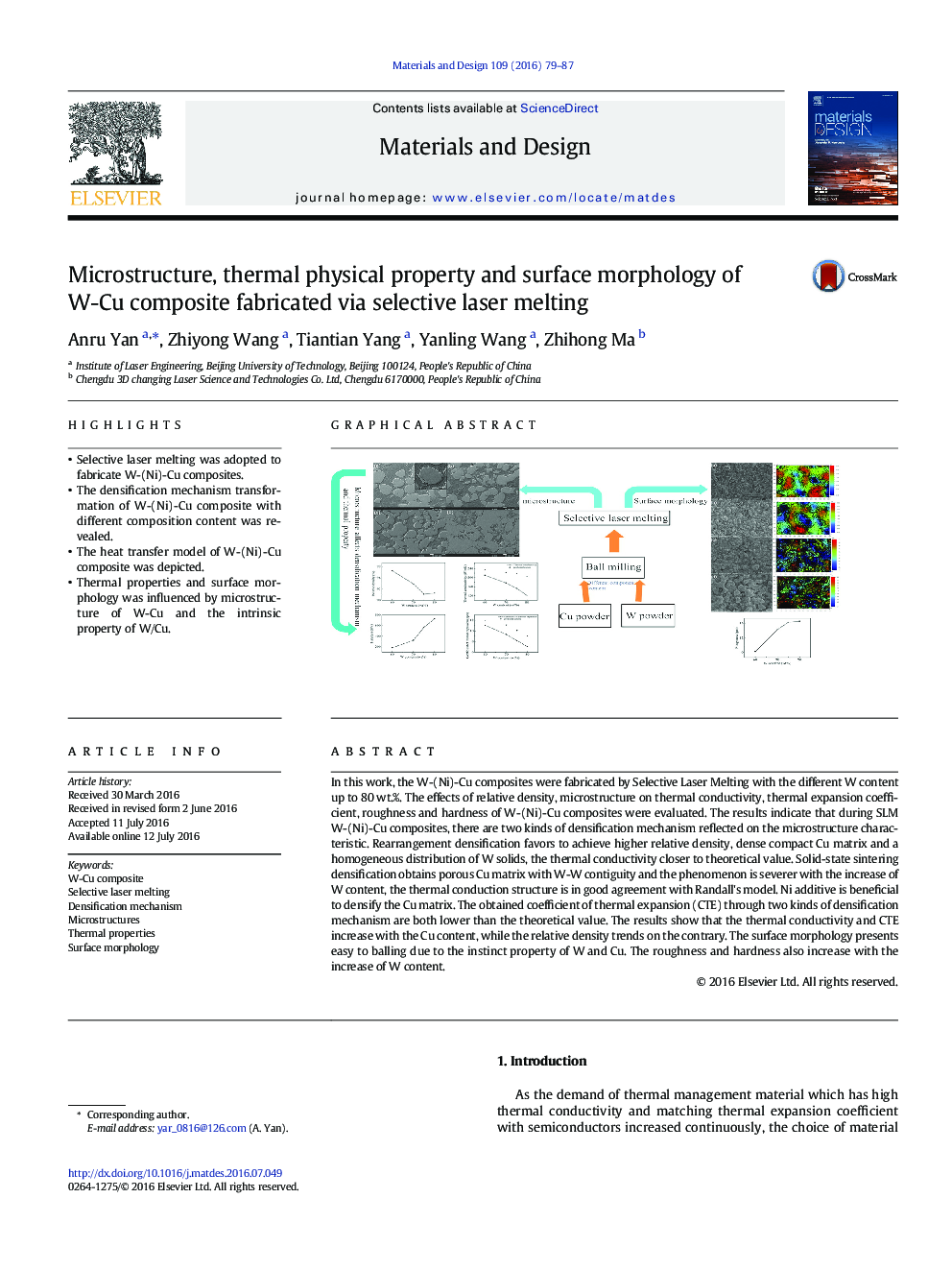| Article ID | Journal | Published Year | Pages | File Type |
|---|---|---|---|---|
| 827677 | Materials & Design | 2016 | 9 Pages |
•Selective laser melting was adopted to fabricate W-(Ni)-Cu composites.•The densification mechanism transformation of W-(Ni)-Cu composite with different composition content was revealed.•The heat transfer model of W-(Ni)-Cu composite was depicted.•Thermal properties and surface morphology was influenced by microstructure of W-Cu and the intrinsic property of W/Cu.
In this work, the W-(Ni)-Cu composites were fabricated by Selective Laser Melting with the different W content up to 80 wt.%. The effects of relative density, microstructure on thermal conductivity, thermal expansion coefficient, roughness and hardness of W-(Ni)-Cu composites were evaluated. The results indicate that during SLM W-(Ni)-Cu composites, there are two kinds of densification mechanism reflected on the microstructure characteristic. Rearrangement densification favors to achieve higher relative density, dense compact Cu matrix and a homogeneous distribution of W solids, the thermal conductivity closer to theoretical value. Solid-state sintering densification obtains porous Cu matrix with W-W contiguity and the phenomenon is severer with the increase of W content, the thermal conduction structure is in good agreement with Randall's model. Ni additive is beneficial to densify the Cu matrix. The obtained coefficient of thermal expansion (CTE) through two kinds of densification mechanism are both lower than the theoretical value. The results show that the thermal conductivity and CTE increase with the Cu content, while the relative density trends on the contrary. The surface morphology presents easy to balling due to the instinct property of W and Cu. The roughness and hardness also increase with the increase of W content.
Graphical abstractFigure optionsDownload full-size imageDownload as PowerPoint slide
